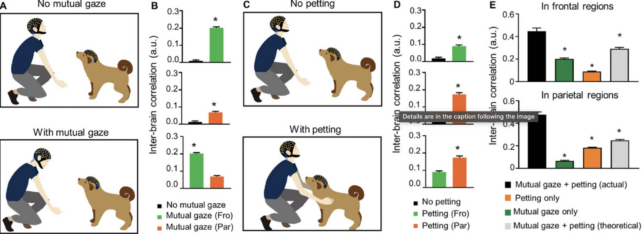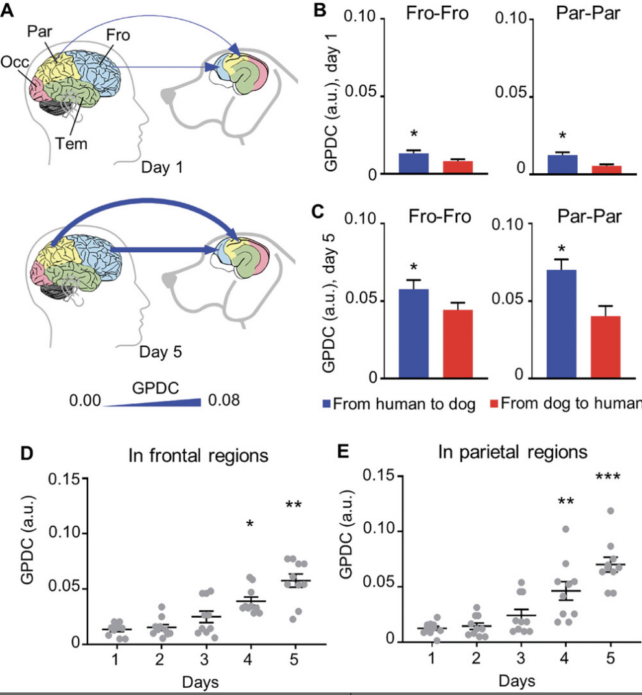If you've ever looked into the big, watery eyes of a dog and suddenly… connected, Perhaps you experienced a moment of brain synchronization.
For the first time, researchers in China have discovered that neural activity synchronizes between two different species: humans and dogs. The findings suggest that we really do bond with our pets on a deeper neurological level.
Previous studies have shown that when people talk or work together, our brain activity can synchronize in key regions. But this is the first set of experiments to report a similar phenomenon between humans and another species.
The researchers measured brain activity in humans and dogs by placing electrodes on their scalps. For the experiment, 10 young beagles were paired with unfamiliar people, and the pairs got to know each other over the course of five days.
In the experiments, the human-dog pairs communicated nonverbally, such as staring at each other or petting each other. As a control, the human and dog also remained in the same room and did not interact.
“We found that the correlation between the brain regions in the frontal and parietal areas increased dramatically… during mutual gaze,” write the study authors, led by biologist Wei Ren of the Chinese Academy of Sciences.
When the human participants simply petted the dogs, the team observed similar patterns of synchrony, but in this case the synchrony was stronger in the parietal brain region.
In humans, activity in both the frontal and parietal brain regions is associated with joint attention. Previous studies have shown that when people pet their dogs, their frontal lobe activity spikes, suggesting that they are paying close attention to their pets and are emotionally engaged. But it was unclear whether this activity was reflected in the dog's brain until now.
In the current study, people were asked to pet the dogs And When they looked into the dogs' eyes, the brain activity between the two was even more strongly connected than when they simply petted the dogs or simply stared at them.


To figure out which brain was conducting this rhythmic neural dance, the human's or the dog's, researchers used a special mathematical algorithm.
By feeding data from every human-dog interaction, the team found that it was the human brain that initiated the linked neural activity. Over the course of the study, the inter-brain synchronization between the human-dog pairs increased, suggesting that the two were forming a bond.


Some scientists hypothesize that the deficits in social cognition seen in autism spectrum disorders (ASD) result from impaired synchronization of the brain with others.
To further investigate this hypothesis, researchers reran the same experiments, but this time with nine dogs that showed similar characteristics to human ASD. In this case, the human-dog pairs showed less inter-brain synchronization, indicating reduced joint attention.
Previous studies have shown that LSD improves social behavior in mice, so researchers tried giving dogs with ASD traits a single dose of the psychedelic drug. The drug ultimately improved the dogs’ synchronization with their paired humans.
Although the study is small and more research is needed, these dogs could be a useful model for studying the neural mechanisms underlying the social deficits associated with ASD, the researchers say.
“Our findings suggest potential inter-brain activity biomarkers for the diagnosis of ASD and the development of engineered, non-hallucinogenic analogues of LSD to correct social deficits,” the authors conclude.
The research was published in Advanced science.

